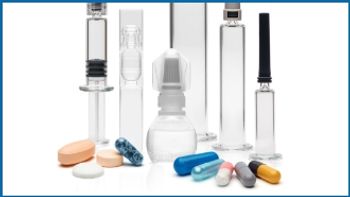
- Pharmaceutical Technology-02-02-2018
- Volume 42
- Issue 2
Material Traceability in Continuous Pharmaceutical Tablet Manufacturing
A systematic framework and software are needed to implement material traceability in continuous pharmaceutical tablet manufacturing.
Pharmaceutical manufacturing is an area with strict regulations requiring precise quality control of drug products. Traditional manufacturing practices have complied with these guidelines for decades. Initiatives have been put forth for advanced manufacturing technologies to be used in the pharmaceutical industry (1), such as continuous manufacturing of oral solid dosage (OSD) drug products. Continuous manufacturing has the potential for a higher level of quality control than batch manufacturing. Because the process is different from traditional batch operations, however, regulatory requirements, such as traceability, will be achieved in a different way.
As opposed to traditional batch processes, where drug components are weighed and then added to a batch unit operation such as a large bin blender, continuous processes have a flow of material traveling through them, from one unit operation to the next. In this way, the amount of material to be processed is dependent on the mass flow rate of the material and the total duration of continuous operation. Batch size is not limited by the size of the equipment, as it is in batch processes. Much work has been done in studying the various areas affecting the performance of continuous manufacturing of OSD drug products, including material characterization (2), facility development (3, 4), modeling for process simulation (5–7), real-time monitoring (8, 9), and process control (10–12). Less attention has been paid, however, to developing the methods and tools through which the materials can be systematically traced during continuous pharmaceutical manufacturing.
For patient safety and regulatory compliance, the history of each pharmaceutical product should be known and traceable. Traceability is rather straightforward for batch processes. The batch numbers for each of the individual components added to a batch unit operation are recorded. At the completion of this operation, a clear record states the amount of each component added and their respective batch numbers. In a continuous system, there is not such a clear distinction when components change from one batch number to another, specifically how and when the change at the inlet of the process affects the outlet. The literature available on traceability in continuous systems address the challenges in other industries, such as diary and food, mining, and pulp and paper (13–15), and although research has been done in developing efficient lot-tracing systems (16), it has failed to address the challenges specific to the pharmaceutical industry and its continuous processes. This article aims to address these challenges and present a framework for implementation of material traceability applicable to continuous pharmaceutical manufacturing.
Defining a batch and lot
The Code of Federal Regulations Title 21 presents the following definitions (17):
Batch: “specific quantity of a drug…intended to have uniform character and quality, … produced according to single manufacturing order”
Lot: “specific identified portion of a batch, having uniform character and quality, … in the case of … continuous process, it is a specific identified amount produced … that assures its having uniform character and quality … ”
Lot number: “distinctive combination of letters, numbers, or symbols, or any combination of them, from which complete history of the manufacture, processing, packing, holding, and distribution of a batch or lot of drug product … can be determined.”
From these definitions, the argument can be made that a continuous production run, in which the critical process parameters (CPPs) remain within a validated range resulting in acceptable tablet critical quality attributes (CQAs), constitutes a single batch. And as batches of tablet components change during this continuous production run, the lot number can distinguish between tablets whose components come from different batches. In the case that one component of the formulation changes the batch number, theoretically, the tablet quality should not change, given that the process conditions are unchanged. For material traceability purposes, however, the tablets containing raw material from one batch and another need to be distinguished. Because this raw material batch change occurs during a single manufacturing order, with no changes to the process conditions, it is, therefore, still the same batch of finished drug product. However, the tablets containing the new raw material batch can be assigned to a separate “lot” within the current tablet batch, making the lot a “specific identified portion of a batch” in which the tablets contain material from a raw material batch different from the previous lot. The idea is that, when tablets are released, a specific batch number and lot number trace exactly what raw material batches are present in the tablet. Figure 1 graphically illustrates the difference in material traceability between (a) batch and (b) continuous processes.
Understanding RTD
One of the technical challenges that must be understood to implement material traceability in a continuous system is the time it takes for a change in component batch number, which occurs at the powder feeder upstream, to be present in the tablet at the outlet of the system. This problem can be addressed by studying the residence time distribution (RTD) of the continuous system (18). By learning the minimum and maximum residence time of a component traveling through the system, a prediction can be made as to when a change in component batch will reach the outlet and when the previous batch will be fully cleared. There are many documented strategies to acquiring RTD of powder processes (19–21). Experimentally, the RTD is studied by conducting tracer experiments, where a pulse of detectable material is added at the inlet and its impact is measured at the outlet. The shape and characteristics of this outlet distribution contain important information for predicting the behavior of powder during a component batch change.
The results from RTD experiments can be used to begin to understand how material traceability will be possible for continuous pharmaceutical manufacturing. From the RTD, the minimum and maximum residence time of each component, namely the time delay of impact at the outlet and the clearance time of the component, can be determined. The tablets created between these two times will have a mixture of the component’s previous batch and new batch and will be referred to as a “transitional lot.” Because the goal for material traceability is to trace component batch numbers for each lot of tablets, the authors propose assigning a new lot number every time the effect of a component batch change is predicted to affect the tablets at the outlet, whether that be the new batch being present in the tablets, or the old batch no longer being present in the tablets.
To implement such a strategy, a few specific determinations must be made. One is a feeder refill protocol, which must specify the amount of material per refill as well as what point triggers the refill. Also required is an automated plant, allowing for real-time data flow from unit operations to a centralized control system, which allows all process parameters to be stored for all unit operations. The residence time values must also be determined for each component in the formulation. The final piece of the framework is a software tool that manages all the data associated with material traceability. Figure 2 illustrates this systematic framework.
Prototype traceability software tool
No software tool currently exists for continuous pharmaceutical material traceability; a prototype was developed to illustrate the proof of concept. As shown in Figure 3, the software is responsible for all material traceability functionality and data management. It must receive the new component batch numbers and assign it to the correct component. It must also increment the tablet lot number according to the proper residence time value for the component that is undergoing a batch change. It is also responsible for updating a table summarizing the composition of each tablet lot with the correct batch number for each component. And finally, it is responsible for communicating with the control system, sending the tablet lot number in real-time for data storage.
One proposed solution to material traceability in continuous manufacturing is to discard tablets once refill occurs, and wait until the maximum residence time to start collecting tablets, thereby, ensuring that the tablets have components with known batch numbers. This strategy is wasteful, potentially resulting in discarding over 10 minutes worth of production, even though, theoretically, the quality of these “transitional” tablets is not compromised. With a transitional lot assigned to tablets while a component is undergoing a batch change, appropriate testing can be conducted, and those tablets released, not discarded, if properly traced by the proposed framework.
Conclusions
This systematic framework for implementation of material traceability in continuous pharmaceutical manufacturing process and the corresponding software prototype to automate the procedure are generic and can be applied in any continuous manufacturing process. The developed framework is complementary to the existing control platform and thus should have a broad application in continuous pharmaceutical manufacturing. This framework uses knowledge from the evolving fields in pharmaceutical engineering, such as experimental determination of residence time, predictive models for residence time of individual unit operations based on material properties, and improved unit operations for continuous application, to accomplish this necessary goal of material traceability. Further developments in these evolving fields could strengthen and make this framework more efficient.
About the authors
Matthew Billups is a graduate student, and Ravendra Singh* is a research assistant professor, both at the Engineering Research Center for Structured Organic Particulate Systems (ERC-SOPS), Department of Chemical and Biochemical Engineering, Rutgers, The State University of New Jersey, Piscataway. *To whom correspondence should be addressed. Tel. +18484454944, ravendra.singh@rutgers.edu.
Article Details
Pharmaceutical Technology
Vol. 42, No. 2
February 2018
Pages: 32–35, 59
Citation
When referring to this article, please cite it as M. Billups and R. Singh, "Material Traceability in Continuous Pharmaceutical Tablet Manufacturing," Pharmaceutical Technology 42 (2) 2018.
Articles in this issue
almost 8 years ago
Designing a Single-Use Biopharmaceutical Processalmost 8 years ago
Analyzing Content Uniformityalmost 8 years ago
Impurity Testingalmost 8 years ago
Tabletop Peristaltic Liquid-Filling Machinealmost 8 years ago
Safety Light Curtain Feature on Tumble Blendersalmost 8 years ago
Aqueous Sugar Film Coating Systemalmost 8 years ago
USB Data Logger for Temperature-Sensitive Productsalmost 8 years ago
Navigating Data Integrity in the Modern LabNewsletter
Get the essential updates shaping the future of pharma manufacturing and compliance—subscribe today to Pharmaceutical Technology and never miss a breakthrough.





